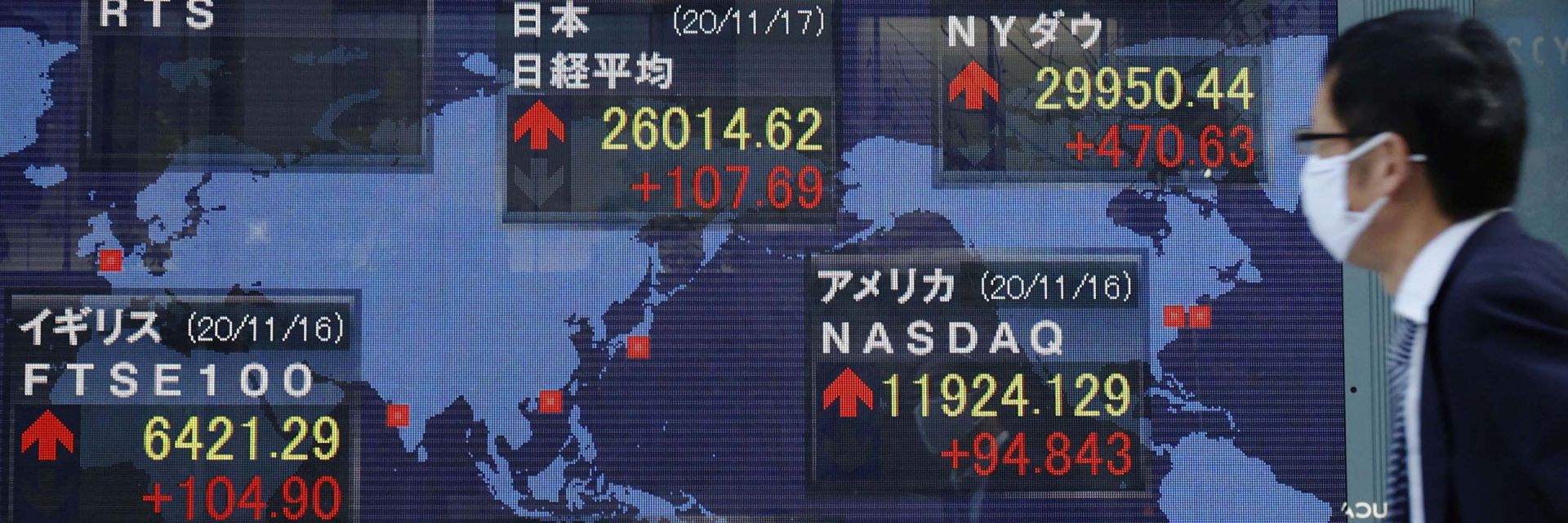| Cash and short duration bonds: high conviction |
- Given the significant impact of recurring waves of the COVID-19 virus globally, a preference for higher quality and liquid opportunities – which translates into our positioning in short duration bonds – is maintained
- Although real interest rates remain negative in most jurisdictions, a high conviction in the asset class seems to make sense from a risk management perspective.
|
| Fixed income: low conviction |
- Only modest opportunities are likely in fixed income given market dynamics. Although sovereign rates appear less attractive in the context of low yields, they offer protection in very weak economic environments. For this reason, a small overweight is maintained in developed market government bonds.
- In credit, the higher quality segment most appeals. But as spreads have recovered remarkably from their highs during the peak of the crisis, our risk budget is allocated towards the equity space. In high yield, selection is key, and our exposure is low given the tightness of spreads. We prefer high yield and emerging market (EM) hard currency debt over EM local currency debt considering the risk facing their economies and currencies.
|
| Developed market government bonds: high conviction |
- Developed market government bonds have been under pressure in recent months as investors reprice inflation and interest rate expectations for a strong economic recovery this year. We continue to see the asset class as an important diversifier however, and maintain our holding at a small overweight
- Although US dollar real rates remain at historically low levels, they are still marginally more attractive relative to the other developed market bond markets. Amid the COVID-19 outbreak and more active central bank behaviour, UK and European bonds have somewhat synchronised with US rates. However, depressed yields make it difficult to find both markets attractive, apart from in respect of managing portfolio risk.
|
| Investment grade bonds: neutral |
- Significant central bank intervention during 2020 helped to offset a large contraction in the economy and allowed markets to digest a substantial increase in leverage ratios and a higher risk of downgrades
- As spreads are now back to tight levels, selection will be key
- With a potential recovery over the course of 2021 there is still room for spread compression within more cyclical sectors
- Conviction towards the asset class was reduced recently, with proceeds moved into cash.
|
| High yield bonds: low conviction |
- Amid the market turmoil of a year ago, spreads widened to historically elevated levels before retracing
- We had previously sought to take advantage of higher spreads in high yield bonds during last year’s sell-off, however the impressive recovery since means that spreads over Treasuries are close to their pre-pandemic levels and well below the long-term average
- Consequently, we have reduced our exposure to the asset class to reflect the lower returns on offer.
|
| Emerging market bonds: low conviction |
- Emerging market hard currency debt is preferred to local currency debt considering the risk facing the respective economies and currencies
- Many EM economies run high debt deficits, low currency reserves and potentially lack capacity to deal with the COVID-19 crisis. The recovery from the pandemic differs in EM and is mostly linked to the infection rates, with Latin America, South Africa, Israel, the Philippines and India under pressure
- However, the US Federal Reserve’s dovish stance should continue to provide some relief to the largely dollar- denominated emerging market debt market
- Although corporate fundamentals are less robust and default rates are gradually rising, the majority of EM central banks have helped issuers by maintaining policy rates at very accommodative levels by historical standards. With rising COVID-19 infections starting to affect EM economies and forex, we are more cautious on local currency debt
- Given downside risks from geopolitical issues, we maintain low conviction to the asset class as margin pressure may increase in the current volatile environment.
|
| Equities: high conviction |
- Portfolios have been positioned in high quality, conservatively capitalised businesses for the longer term. Valuations remain elevated by historical standards but unlikely to revert back to their mean until central banks’ support is dialled down. With a blue-sky scenario (from an earnings’ perspective) largely priced in already, we believe investors will need to be selective.
- Regionally, we see compelling opportunities in both developed market equities and emerging market equities from a risk budgeting perspective. However, not all emerging markets are created equally and so warrant selectivity. Asia appears to provide a broader opportunity set than elsewhere.
|
| Developed market equities: high conviction |
- Equity markets have rallied significantly, and are still optimistic but remain cautious of rising Delta variant cases globally
- Further out, market events have created an opportunity for those willing to take a longer term view and be selective
- The rapid and sizeable response of central banks and governments to events means that policy should be favourable when a recovery takes hold
- Most importantly, active management and selective stock picking of companies with strong balance sheets is favoured. We focus on businesses with high cash returns on capital, with conservative capital structures and ideally an ability to reinvest cash in future growth at equally high rates of return. The US tends to offer us more opportunities to invest in such businesses, meaning that North America remains the largest geographical weighting within the equity allocation.
|
| Emerging market equities: high conviction |
- Emerging markets have suffered from country specific risks and slowdown in the region, particularly after the impact of COVID-19
- China imposing lockdowns due to the Delta variant and Beijing reigning in sectors such as technology is resulting in short-term volatility
- While the region may suffer significantly for the pandemic in the short term (especially in Latin America), a secular shift from investment to consumption should support growth over the medium term
- Furthermore, the region should benefit from the benign rate environment
- Asia seems a more attractive prospect for growth than Latin America
- While markets appear increasingly cautious, emerging market equities should benefit from attractive valuations. Our position in the asset class was increased in January.
|
| Other assets: low conviction |
Alternative asset classes will continue to diversify our portfolio, but are not expected to be the main drivers of returns. Gold’s record as a safe-haven asset remains attractive in the context of a diversified portfolio, and for this reason we are neutral on the asset class. Conversely, real estate and alternative trading strategies are underpinned by a weak investment case. |
| Commodities: neutral |
- The sole exposure within commodities continues to be our position in gold
- Despite a weaker gold price in the past few months, value persists in gold compared to other commodities. This allocation is seen as complementary to the other risk-mitigating assets in the portfolio
- The asset class has little appeal outside of precious metals and our risk budget can be better deployed elsewhere.
|
| Real estate: low conviction |
Real estate should continue to provide mild diversification benefits, helped by loose monetary policy. That said, we maintain a low conviction due to structural headwinds, such as the shift to online retailing, as well as to the higher leverage in the sector.
|
| Alternative trading strategies: low conviction |
- The low conviction in alternatives reflects their high expense and a lack of investment opportunities in the space. However, strategies that have low correlations to equities, such as merger arbitrage, appear preferable
- Nonetheless, sudden spikes in volatility, which are likely to materialise more often in a volatile environment, may lift the asset class at least in the short term.
|

